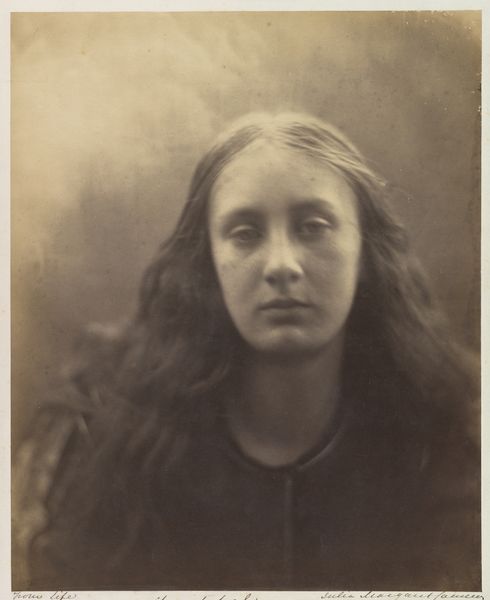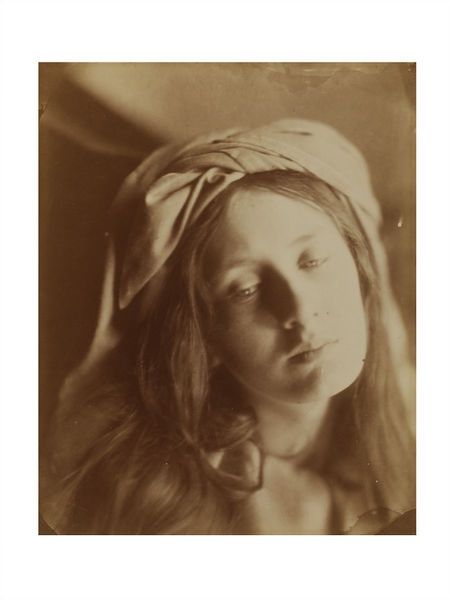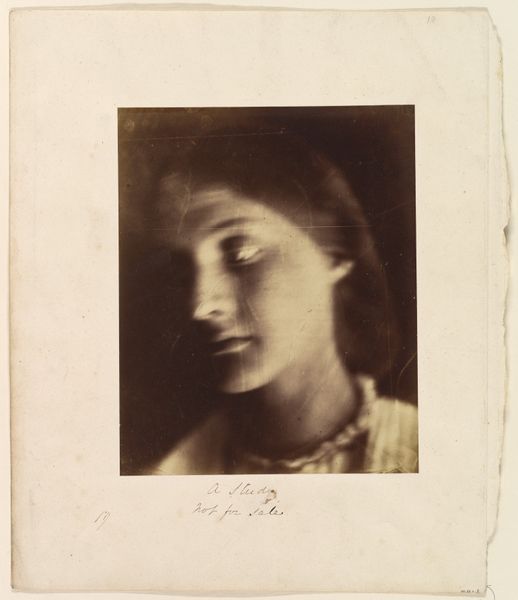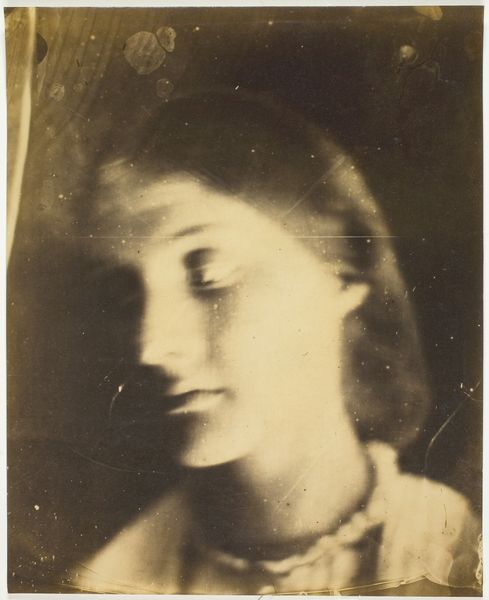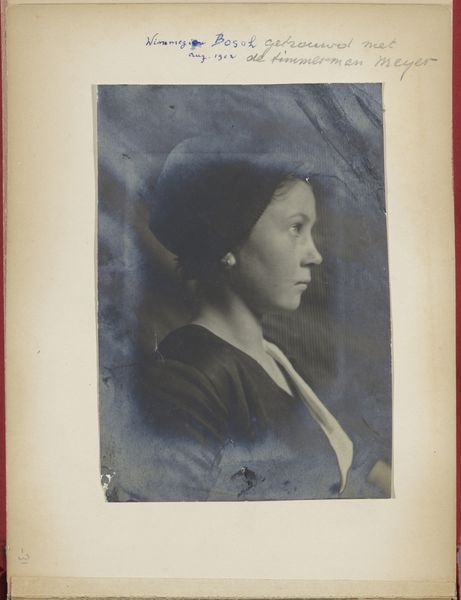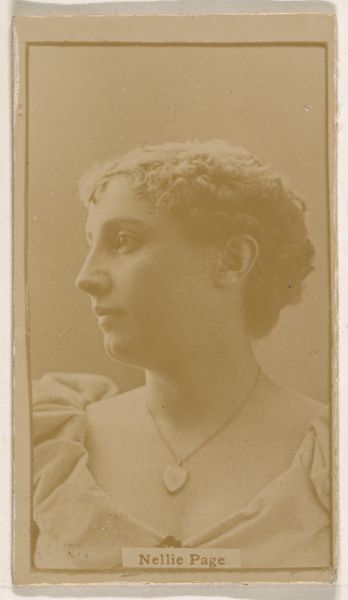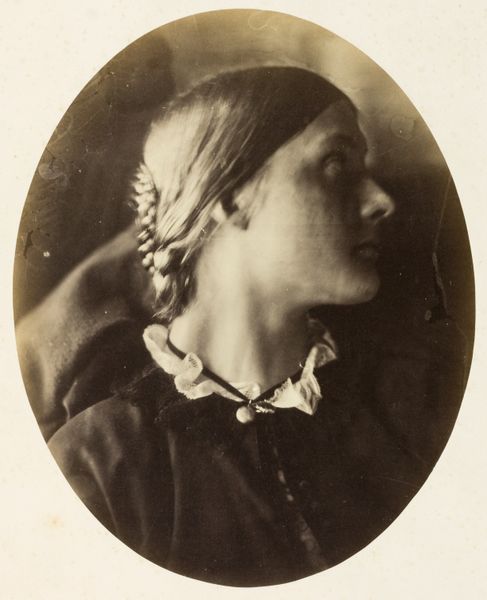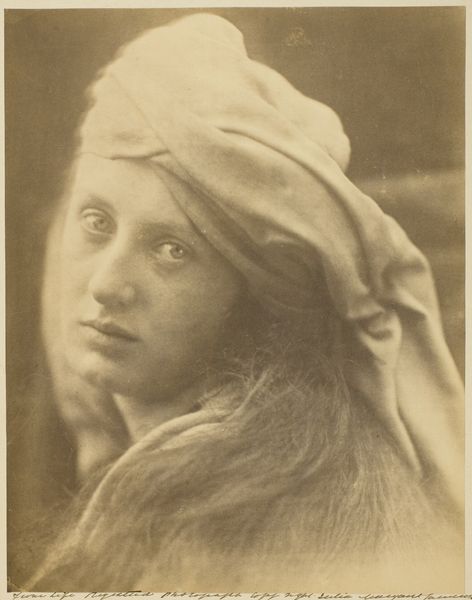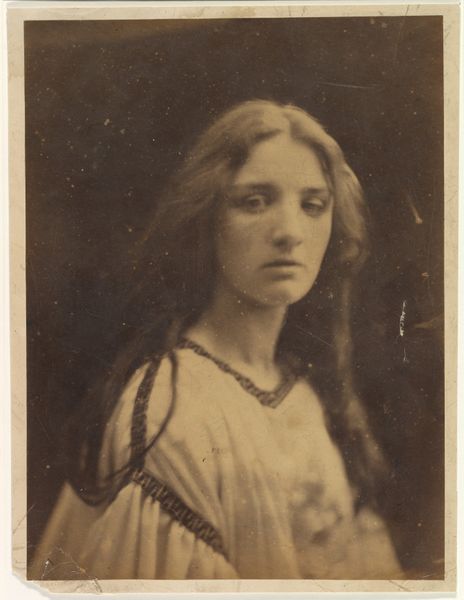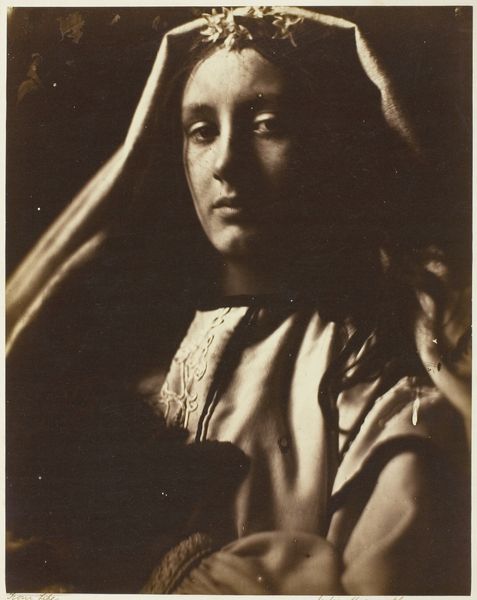
Dimensions: 35 x 27.3 cm (13 3/4 x 10 3/4 in. )
Copyright: Public Domain
Curator: Julia Margaret Cameron’s 1865 gelatin silver print, "Sappho," now housed at The Metropolitan Museum of Art, strikes me immediately. What is your first impression? Editor: A dreamy wistfulness. The soft focus almost dissolves the subject. It evokes a very romanticized vision of the past, doesn't it? Curator: Indeed. The romantic lens is, perhaps, unavoidable here. Cameron's pictorialist style deliberately rejects sharp realism for a more subjective and atmospheric approach. Note how the light delicately catches the planes of her face and neck. Editor: But look closer. That heavy necklace of repeated oval shapes… isn't that almost primitive? What cultural meanings did that convey, placed upon a figure titled "Sappho?” Curator: Certainly, Sappho, the ancient Greek poet, carries a powerful legacy as an emblem of female love and artistic expression. This is undoubtedly what Cameron intended. Her attire, juxtaposed against the soft light, seems intended to emphasize the romantic view that associated sapphic women with a bohemian lifestyle. Editor: Yes! It feels almost performative. Consider how Sappho, as a historical figure, has been constantly reimagined. By styling her model this way, Cameron contributes to the myth, even crafting a new visual vocabulary of it. Curator: Precisely. The symbolism embedded here is so potent and multi-layered. I appreciate how the very texture of the print reinforces the historical weight. Editor: And yet, through Cameron’s photographic technique, the iconic and real somehow merge. It's fascinating how the material – the necklace, the gown – adds a new level to the historical dialogue we still have today. Curator: Agreed, this seemingly simple portrait really does unpack quite beautifully. Editor: I think it encourages a wonderful dialogue around how history and image intertwine.
Comments
No comments
Be the first to comment and join the conversation on the ultimate creative platform.
